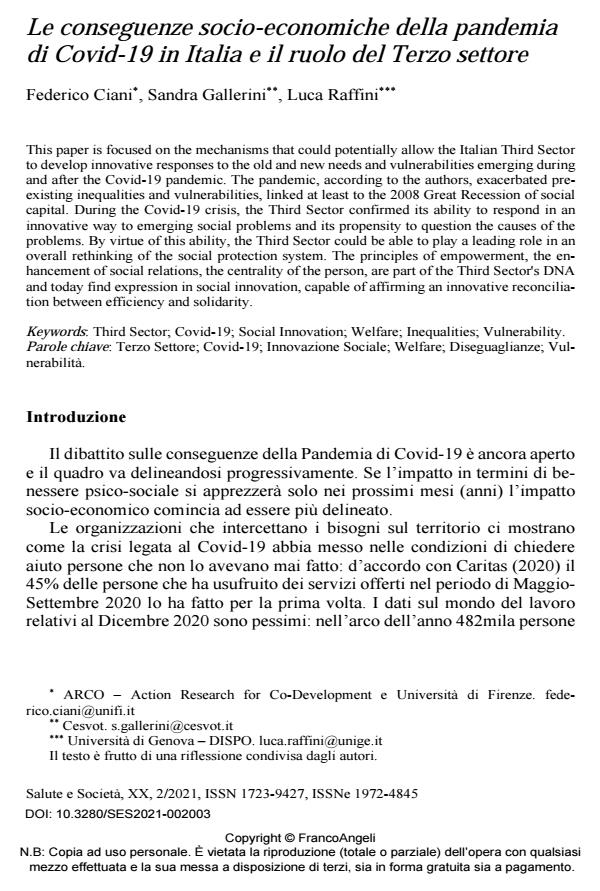Le conseguenze socio-economiche della pandemia di Covid-19 in Italia e il ruolo del Terzo settore
Journal title SALUTE E SOCIETÀ
Author/s Federico Ciani, Sandra Gallerini, Luca Raffini
Publishing Year 2021 Issue 2021/2
Language Italian Pages 15 P. 25-39 File size 244 KB
DOI 10.3280/SES2021-002003
DOI is like a bar code for intellectual property: to have more infomation
click here
Below, you can see the article first page
If you want to buy this article in PDF format, you can do it, following the instructions to buy download credits

FrancoAngeli is member of Publishers International Linking Association, Inc (PILA), a not-for-profit association which run the CrossRef service enabling links to and from online scholarly content.
This paper is focused on the mechanisms that could potentially allow the Italian Third Sector to develop innovative responses to the old and new needs and vulnerabilities emerging during and after the Covid-19 pandemic. The pandemic, according to the authors, exacerbated pre-existing inequalities and vulnerabilities, linked at least to the 2008 Great Recession of social capital. During the Covid-19 crisis, the Third Sector confirmed its ability to respond in an in-novative way to emerging social problems and its propensity to question the causes of the problems. By virtue of this ability, the Third Sector could be able to play a leading role in an overall rethinking of the social protection system. The principles of empowerment, the en-hancement of social relations, the centrality of the person, are part of the Third Sector's DNA and today find expression in social innovation, capable of affirming an innovative reconcilia-tion between efficiency and solidarity.
Keywords: Third Sector; Covid-19; Social Innovation; Welfare; Inequalities; Vulnerability.
Federico Ciani, Sandra Gallerini, Luca Raffini, Le conseguenze socio-economiche della pandemia di Covid-19 in Italia e il ruolo del Terzo settore in "SALUTE E SOCIETÀ" 2/2021, pp 25-39, DOI: 10.3280/SES2021-002003